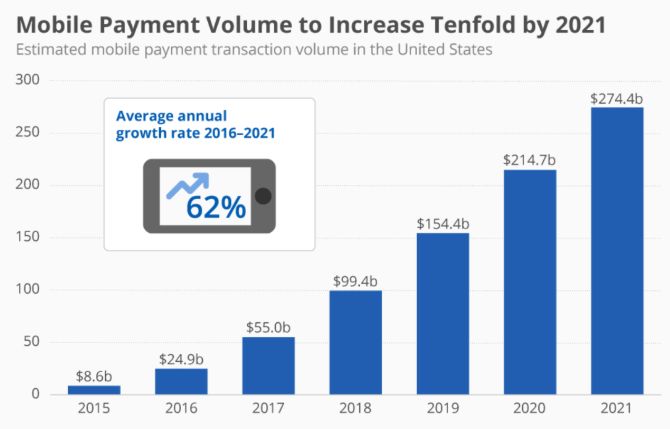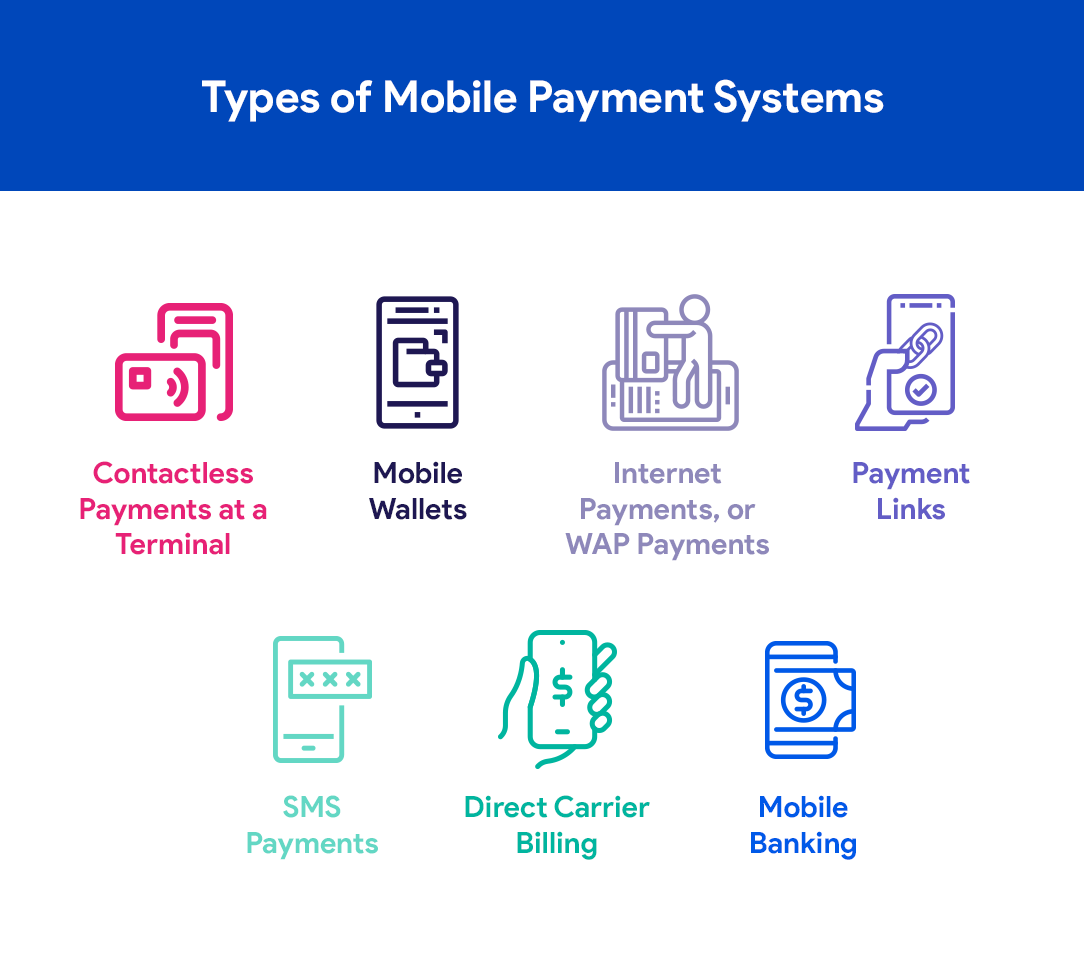Is this a golden age for mobile payment systems?
Is this a golden age for mobile payment systems?
As the world has grown more and more digital, a number of industries were clearly destined to shift. Consumers were making their purchases more and more online, and specifically more often on their phones. Now that smartphone use has become ubiquitous the world over, so too have mobile payments become equally widespread. The pandemic has become a catalyst for spurring change in many different industries.
Why do mobile payments change everything?
One of the things that mobile payments have done to every single industry is the ability to bring financial services to people who previously did not deal with banks. Obviously, this is a gamechanger.
In addition to that, the WHO (World Health Organisation) has advised consumers to stay away from cash for hygienic reasons as soon as the COVID-19 pandemic began in March 2020. As an increasing number of consumers were forced to stay at home, the need to make purchases online and pay bills increased dramatically.
E-commerce already is primarily done through mobile payments, with at least 60% of sales coming through mobile customers, and that was before the pandemic. Year on year, growth of sales through mobile devices has outshot every other kind of device, a trend that will fairly obviously continue on into the future:

Mobile payments are critical for e-commerce for a few reasons, the most basic of which is very simply that offering more payment options means you can reach more consumers. Mobile payments are of course particularly popular with the younger generations, though the pandemic has meant that it’s become more widespread throughout the population at large. And the ease of mobile payments makes e-commerce conversions even easier, with no extra time spent by the consumer putting in personal details.
Alexa, Amazon’s virtual assistant, now allows payments to be made directly through voice purchases. WeChat and Alipay are massive in China, as mobile payments are there to becoming the dominant form of e-commerce.
One challenge mobile payments face is that many start out as simply a broker between companies and the customer. But as the technology becomes more widespread and advanced, more and more payment systems are tailoring their payments to specific plans and specific customer segments from their customer portal. This, of course, means that payment plans should only get easier and easier as we enter this next wave of goods and services being accessed through agency portals.
Another problem lies in specific industries themselves. Like many industries that have been around quite a long time and are just now beginning to adapt to new technology, pension management systems often aren’t built to handle the speed and infrastructure required for mobile payments. But, as with every industry – including banking as we’ve noted before – firms that don’t keep up with the times are doomed to fall behind the rest of the pack.
Similar to this, security, and the ability to persuade consumers that the technology really is secure, is critical to moving forward. One-touch payment makes purchases markedly easy, This means that stringent security measures that meet international security standards are required, which of course can cost more time and money than is otherwise expected. To many consumers mobile payments feel more secure as they’re not handing over their personal details to multiple sources, just the one single source that they trust.
Cross platform payment issues can rise, as most industries will be dealing with clients who use both Android and iOS. Given that you want your app to work seamlessly across all platforms, this poses quite the challenge and again requires a set of technological solutions, like Direct Mobile Billing Options, Near Field Communication (NFC – No-Touch Mobile Payments), or SMS Based Mobile Payments.
And then after all this, any system of mobile payment has to be ready for new technology to arise and completely reshape their industry. But speaking of all this, let’s get to the types of mobile payment systems that exist.
Types of Mobile Payment Systems

Mobile payment systems are any form of payment using a mobile device. As smart phones have become more and more common, so have the variety of mobile payment systems that companies use. Here are a few of them:
– Contactless payments at a terminal. There are a number of different types of terminal based payment systems using smart phones, including magnetic secure transmission, sound waves-based payments, and NFC payments.
– Mobile Wallets. Mobile wallets like Apple Pay or Google Pay are incredibly secure using encryption and tokenization, letting you throw in a number of different payment “cards” or options into your digital wallet in one go.
– Internet Payments, or WAP payments. This was more common a decade or so ago, where your credit card information is connected directly to the browser or app.
– Payment Links. Again, these are growing less and less common, but it’s essentially a link that sends you to a payment page with an itemized bill for you to see at checkout.
– SMS Payments. These types of payments allow you to combine your phone bill and payments together, so by sending an SMS, your bill is simply charged to your phone bill.
– Direct Carrier Billing. Similarly, this allows you to verify your phone number and then add any payment to your phone bill.
– Mobile Banking. This is obviously the most relevant for the insurance industry, in which an app can be connected directly to your bank, or the app one which you have your banking account, and then payment can be deducted according to your usage on the customer portal, web portal.
How do payment systems work? (What’s in it for customers and companies?)
Systems and payment systems need to become more flexible than ever. Customers want apps to make sure that they’re able to access the ability to make payments wherever they are or whatever they’re doing. Maybe car insurance even when using lift sharing apps, or home insurance if they’re using AirBNB. People’s needs are varied and immediate, which is why customers want payment plans that work at literally the push of a button rather than an annual package. It means that apps must be intuitive and easy to use and allow customers to know exactly what they’re paying for at all times.
New Methods of Payment
The pandemic has meant that physical interaction of any sort is undesirable. This includes handing over credit cards where people are touching and potentially passing on critical germs from one hand to another.
Contactless payments represent a mode of payment that limits interaction, and as a result has become significantly more popular during the pandemic. Mastercard saw its contactless payments jump 40% over the initial period, and that trend is only expected to continue. In countries like Ireland, which set a limit on contactless payments, those limits have been raised and an absolute windfall of contactless payments followed. In May, Ireland saw €600 million spending just through contactless payments in one month alone.
Even facial recognition technology is on the rise. In China, where mobile payments are already the most used form of payment compared with any other country in the world, facial recognition technology was introduced recently, with Alipay investing $420 million over the next three years to implement this technology. Naturally, with the prospect of the Coronavirus pandemic lasting a number of years, and the prospect of future pandemics forcing us into new ways of living, this represents a future avenue for secure payments, though there are very serious obstacles involving facial recognition technology that must be overcome first.
Another innovative payment technology involves using phones as POS technology, essentially allowing you to pay for everything simply by “swiping” your phone. Smartphone based POS terminals is another source of contactless and cashless payment that is on the rise.
In essence, all technology that decreases the use of cash and human interaction is being developed and adopted much faster than would have happened without the pandemic. Prior to the pandemic, just persuading consumers to adopt new technologies was a challenge. Now, even Bitcoin has been recovering beyond expectations. As traditional stocks and commodities have been hit hard (and continue to get hard) by the pandemic, BTC improved 135% since March, and of course should its use prove widespread over a second and third wave of the pandemic then its shares would rise even further.
Case Studies
Many companies are stringently investing in mobile payment technology. Companies like WhatsApp are working with selected banks to introduce mobile payment features through UPI (unified payments interface). Stand-alone banks such as Işbank in Turkey have introduced an integrated mobile app, called Maxi, that will offer its some 15 million customers a seamless way to interact with the bank in all financial services. ForteBank in Kazakhstan wanted to become one of the first adopters of Apple Pay to make banking convenient, user-friendly, and accessible for their customers.
Key Takeaways
The use of Mobile payments has increased tenfold during the years leading up to the 2020 Coronavirus pandemic, and during the first months of the pandemic it’s increased another tenfold. As the technology rushes to catch up with demand, contactless payments and potentially even facial recognition technology represent the future for payment systems. As these forms of payment become ever more ubiquitous throughout every industry, mobile payments and contactless payments will become more and more the wave of the future.
Reading Time: 10 minutes
Don’t miss out the latestCommencis Thoughts and News.

Commencis
27/08/2020
Reading Time: 10 minutes
As the world has grown more and more digital, a number of industries were clearly destined to shift. Consumers were making their purchases more and more online, and specifically more often on their phones. Now that smartphone use has become ubiquitous the world over, so too have mobile payments become equally widespread. The pandemic has become a catalyst for spurring change in many different industries.
Don’t miss out the latestCommencis Thoughts and News.
Why do mobile payments change everything?
One of the things that mobile payments have done to every single industry is the ability to bring financial services to people who previously did not deal with banks. Obviously, this is a gamechanger.
In addition to that, the WHO (World Health Organisation) has advised consumers to stay away from cash for hygienic reasons as soon as the COVID-19 pandemic began in March 2020. As an increasing number of consumers were forced to stay at home, the need to make purchases online and pay bills increased dramatically.
E-commerce already is primarily done through mobile payments, with at least 60% of sales coming through mobile customers, and that was before the pandemic. Year on year, growth of sales through mobile devices has outshot every other kind of device, a trend that will fairly obviously continue on into the future:

Mobile payments are critical for e-commerce for a few reasons, the most basic of which is very simply that offering more payment options means you can reach more consumers. Mobile payments are of course particularly popular with the younger generations, though the pandemic has meant that it’s become more widespread throughout the population at large. And the ease of mobile payments makes e-commerce conversions even easier, with no extra time spent by the consumer putting in personal details.
Alexa, Amazon’s virtual assistant, now allows payments to be made directly through voice purchases. WeChat and Alipay are massive in China, as mobile payments are there to becoming the dominant form of e-commerce.
One challenge mobile payments face is that many start out as simply a broker between companies and the customer. But as the technology becomes more widespread and advanced, more and more payment systems are tailoring their payments to specific plans and specific customer segments from their customer portal. This, of course, means that payment plans should only get easier and easier as we enter this next wave of goods and services being accessed through agency portals.
Another problem lies in specific industries themselves. Like many industries that have been around quite a long time and are just now beginning to adapt to new technology, pension management systems often aren’t built to handle the speed and infrastructure required for mobile payments. But, as with every industry – including banking as we’ve noted before – firms that don’t keep up with the times are doomed to fall behind the rest of the pack.
Similar to this, security, and the ability to persuade consumers that the technology really is secure, is critical to moving forward. One-touch payment makes purchases markedly easy, This means that stringent security measures that meet international security standards are required, which of course can cost more time and money than is otherwise expected. To many consumers mobile payments feel more secure as they’re not handing over their personal details to multiple sources, just the one single source that they trust.
Cross platform payment issues can rise, as most industries will be dealing with clients who use both Android and iOS. Given that you want your app to work seamlessly across all platforms, this poses quite the challenge and again requires a set of technological solutions, like Direct Mobile Billing Options, Near Field Communication (NFC – No-Touch Mobile Payments), or SMS Based Mobile Payments.
And then after all this, any system of mobile payment has to be ready for new technology to arise and completely reshape their industry. But speaking of all this, let’s get to the types of mobile payment systems that exist.
Types of Mobile Payment Systems

Mobile payment systems are any form of payment using a mobile device. As smart phones have become more and more common, so have the variety of mobile payment systems that companies use. Here are a few of them:
– Contactless payments at a terminal. There are a number of different types of terminal based payment systems using smart phones, including magnetic secure transmission, sound waves-based payments, and NFC payments.
– Mobile Wallets. Mobile wallets like Apple Pay or Google Pay are incredibly secure using encryption and tokenization, letting you throw in a number of different payment “cards” or options into your digital wallet in one go.
– Internet Payments, or WAP payments. This was more common a decade or so ago, where your credit card information is connected directly to the browser or app.
– Payment Links. Again, these are growing less and less common, but it’s essentially a link that sends you to a payment page with an itemized bill for you to see at checkout.
– SMS Payments. These types of payments allow you to combine your phone bill and payments together, so by sending an SMS, your bill is simply charged to your phone bill.
– Direct Carrier Billing. Similarly, this allows you to verify your phone number and then add any payment to your phone bill.
– Mobile Banking. This is obviously the most relevant for the insurance industry, in which an app can be connected directly to your bank, or the app one which you have your banking account, and then payment can be deducted according to your usage on the customer portal, web portal.
How do payment systems work? (What’s in it for customers and companies?)
Systems and payment systems need to become more flexible than ever. Customers want apps to make sure that they’re able to access the ability to make payments wherever they are or whatever they’re doing. Maybe car insurance even when using lift sharing apps, or home insurance if they’re using AirBNB. People’s needs are varied and immediate, which is why customers want payment plans that work at literally the push of a button rather than an annual package. It means that apps must be intuitive and easy to use and allow customers to know exactly what they’re paying for at all times.
New Methods of Payment
The pandemic has meant that physical interaction of any sort is undesirable. This includes handing over credit cards where people are touching and potentially passing on critical germs from one hand to another.
Contactless payments represent a mode of payment that limits interaction, and as a result has become significantly more popular during the pandemic. Mastercard saw its contactless payments jump 40% over the initial period, and that trend is only expected to continue. In countries like Ireland, which set a limit on contactless payments, those limits have been raised and an absolute windfall of contactless payments followed. In May, Ireland saw €600 million spending just through contactless payments in one month alone.
Even facial recognition technology is on the rise. In China, where mobile payments are already the most used form of payment compared with any other country in the world, facial recognition technology was introduced recently, with Alipay investing $420 million over the next three years to implement this technology. Naturally, with the prospect of the Coronavirus pandemic lasting a number of years, and the prospect of future pandemics forcing us into new ways of living, this represents a future avenue for secure payments, though there are very serious obstacles involving facial recognition technology that must be overcome first.
Another innovative payment technology involves using phones as POS technology, essentially allowing you to pay for everything simply by “swiping” your phone. Smartphone based POS terminals is another source of contactless and cashless payment that is on the rise.
In essence, all technology that decreases the use of cash and human interaction is being developed and adopted much faster than would have happened without the pandemic. Prior to the pandemic, just persuading consumers to adopt new technologies was a challenge. Now, even Bitcoin has been recovering beyond expectations. As traditional stocks and commodities have been hit hard (and continue to get hard) by the pandemic, BTC improved 135% since March, and of course should its use prove widespread over a second and third wave of the pandemic then its shares would rise even further.
Case Studies
Many companies are stringently investing in mobile payment technology. Companies like WhatsApp are working with selected banks to introduce mobile payment features through UPI (unified payments interface). Stand-alone banks such as Işbank in Turkey have introduced an integrated mobile app, called Maxi, that will offer its some 15 million customers a seamless way to interact with the bank in all financial services. ForteBank in Kazakhstan wanted to become one of the first adopters of Apple Pay to make banking convenient, user-friendly, and accessible for their customers.
Key Takeaways
The use of Mobile payments has increased tenfold during the years leading up to the 2020 Coronavirus pandemic, and during the first months of the pandemic it’s increased another tenfold. As the technology rushes to catch up with demand, contactless payments and potentially even facial recognition technology represent the future for payment systems. As these forms of payment become ever more ubiquitous throughout every industry, mobile payments and contactless payments will become more and more the wave of the future.




